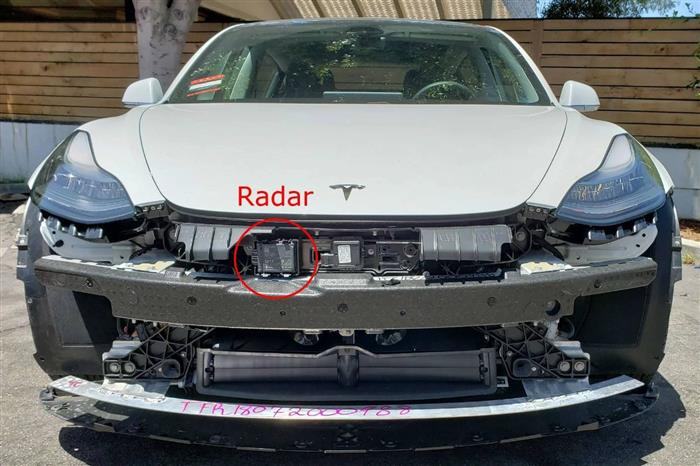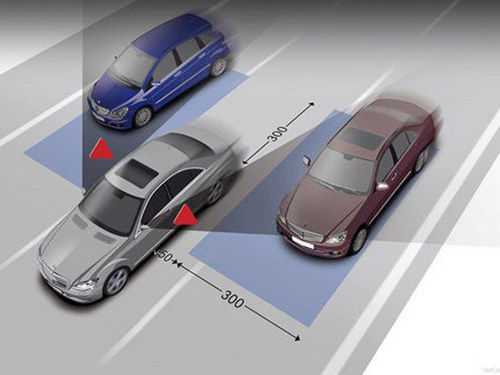Millimeter wave and laser technologies have important applications in the field of unmanned vehicles, especially millimeter wave related technologies. During the research and development of unmanned vehicle driving, millimeter wave radar is often used as one of the unmanned driving sensors. The reason is that the millimeter wave sensor has a longer measuring distance than the laser radar and camera, and can maintain stable operation in severe weather conditions such as rain and snow. This shows that millimeter wave technology plays an important role in the field of unmanned vehicles. In this article, we will introduce the relevant knowledge of millimeter wave radar and how to apply millimeter wave to unmanned vehicles.
Overview of millimeter wave radar market
At present, millimeter wave radar technology is mainly monopolized by traditional parts giants such as Continental, Bosch, Dianzhuang, Autoliv, Denso, Delphi, and especially 77GHz millimeter wave radar. Only Bosch, Continental, Delphi, Dianzhuang, TRW, Fuji Tongtian, Hitachi and other companies master the technology. In 2015, the market share of Bosch and mainland automotive radar was 22%, ranking first in the world.
Bosch's long range millimeter wave radar product is its core product. Its detection range can reach 250 meters. It is the longest range millimeter wave radar currently, mainly used in the self cruise control system ACC. The mainland is relatively comprehensive, and its main product is the 24GHz millimeter wave radar. Hella takes the 24GHz radar as its core, with the widest customer range and the largest market share in the 24GHz field in the world.
Market share of foreign millimeter wave radar manufacturers

Characteristics of millimeter wave radar
In terms of frequency selection of millimeter wave radar, each country mainly has three bands - 24GHz, 60GHz and 77GHz, and is now moving closer to 77GHz. Europe and the United States chose to focus on 77GHz, while Japan chose the 60GHz frequency band. With the wide application of 77GHz millimeter wave radars worldwide, Japan has gradually turned to the development of 77GHz millimeter wave radars.
At present, millimeter wave radar mainly appears in the form of 24GHz SRR (Short Range Radar) system+77GHz LRR (Long Range Radar) system. The 24GHz millimeter wave radar is mainly responsible for short range detection, while the 77GHz millimeter wave radar is mainly responsible for long range detection.
1. The 77GHz radar is smaller than the 24GHz radar. The wavelength of 77GHz radar is less than one third of that of 24GHz, so the area of transceiver antenna is greatly reduced, and the size of the whole radar is effectively reduced, which is very beneficial to the pursuit of miniaturization.
2. 77GHz radar can meet the requirements of high transmission power and wide working bandwidth at the same time, which enables it to achieve long-distance detection and high range resolution at the same time.
3. 77GHz radar is more difficult to design and manufacture antenna, RF circuit, chip, etc., with low technology maturity and higher cost at present.
In addition, ITU classified 79GHz as an application in the field of automobile safety in 2015. This frequency band can detect pedestrians and target multiple targets. In the future, it may replace 24GHz as a short-range radar and be widely used.
Advantages of millimeter wave radar
Millimeter wave radar has the characteristics of long wave length, wide frequency band (large frequency range) and strong penetration, which form the advantages of millimeter wave radar:
1. Strong penetration ability, not affected by weather. The atmosphere has attenuation effect on the propagation of radar band. The attenuation of millimeter wave radar is weaker than that of infrared ray, microwave, etc. in clean air, rain, fog, smoke and pollution, and has stronger penetration ability. Millimeter wave radar has narrow beam, wide frequency band and high resolution. It is all-weather in the atmospheric window frequency band and is not affected by day and night.
2. Compact size, high recognition accuracy. Millimeter wave length, small antenna aperture and small component size make the millimeter wave radar system small in size and light in weight, and easy to install in cars. For the same object, millimeter wave radar has large section area and high sensitivity, and can detect and locate small targets.
3. It can realize remote sensing and detection. Millimeter wave radar is divided into long range radar (LRR) and short range radar (SRR). Because millimeter wave attenuation in the atmosphere, it can detect and sense farther distance, and the long range radar can realize sensing and detection of more than 200m.
Millimeter wave radar has many advantages, and it currently accounts for a large proportion in automotive anti-collision sensors. According to IHS data, millimeter wave/microwave radar+camera accounts for 70% of automotive anti-collision sensors.
Foreign millimeter wave radar manufacturers
International giants have a long history of research in the field of millimeter wave radar, accumulated profound technology, and occupied a dominant position in the global market. The research of vehicle mounted millimeter wave radar is mainly carried out in some developed countries represented by Germany, the United States and Japan. At present, the technology of millimeter wave radar is mainly monopolized by Bosch, Continental, Electric Equipment, Autoliv, Delphi and other traditional parts giants. The following figure shows the relevant information about millimeter wave radar from some foreign manufacturers.

So, how to successfully apply millimeter wave technology to unmanned vehicles?
Application of Millimeter Wave Radar in Unmanned Vehicles
1. Working principle of radar
For human beings and other creatures, eyes and ears are indispensable devices to obtain information about the external environment. However, driverless vehicles rely on machines to obtain external information, so their related equipment is replaced by radar. Therefore, the carrier of information transmission has changed from light to radio waves. However, both light and radio waves are electromagnetic waves in nature, and their propagation speed in vacuum is the same.
Although the structures and types of radars are different, their basic forms are the same, that is, they all have transmitters, transmitting antennas, receivers, receiving antennas, processing parts and displays.
When working, first transmit the radio wave in a certain direction through the antenna carried by the transmitter. If the radio wave encounters an obstacle in the transmission process, it will reflect, and the antenna will send the reflected wave to the receiving equipment for processing after receiving it, so as to obtain the relevant information of the obstacle, such as calculating the speed of the obstacle through the Doppler effect, calculating the distance between the obstacle and the time difference between transmission and reception, etc.
2. Relationship with driverless vehicles
Usually, the driver of the vehicle is a person with a driving license, who can judge the external environment through his eyes and ears, so as to drive the vehicle forward, turn and avoid obstacles. However, the driver of driverless vehicles has changed from a person to a machine. Accordingly, the equipment for acquiring external information has been replaced by radar from eyes and ears. The unmanned vehicle obtains external information through the radar equipment mounted on it, and makes response to corresponding events after analysis.
In reality, what about the performance of radar? Take the universal Cruise unmanned vehicle as an example. Universal Cruise uses 5 laser radars and 21 millimeter wave radars, which are respectively placed around the vehicle body. Among the 21 millimeter wave radars, 12 are 79GHz radars provided by Japan ALPS. Four ARS-408 radars are installed in pairs at the front and rear of the vehicle body, and five high-resolution radars are installed at the front, rear, left and right directions, with a resolution of 4cm.
The 12 79GHz millimeter wave radars work in a cascade mode, that is, when an object performs an operation, it judges whether the associated object performs the operation synchronously. This mode of work allows the driverless vehicles to clearly perceive the 360 ° information around them, and can also track thousands of targets at the same time, which greatly improves the ability of driverless vehicles to respond to emergencies. These 12 79GHz millimeter wave radars constitute a redundant system. Although it will increase the manufacturing cost and make the system look a little bloated, it will be insignificant compared with the benefits of its safety performance improvement.
The system composed of many radars can update the maps around the driverless vehicles all the time. Therefore, to some extent, driverless vehicles are safer than human driven vehicles. No matter how sophisticated the driver is, he cannot always pay attention to the road conditions in all directions, but the machine driver can make a calm judgment and make an optimal solution to the situation in all directions without difference.
3. Future Expectations
At present, great breakthroughs have been made in the development of unmanned vehicles. Science and technology companies such as Google and Baidu have all finished the road test of their driverless vehicles, and Beijing, China, also formulated and released two documents last year, namely, the Guiding Opinions of Beijing on Accelerating the Road Test of Autonomous Vehicles (Trial) and the Detailed Rules for the Administration and Implementation of Road Test of Autonomous Vehicles in Beijing (Trial). It has to be said that the future of the research and development of driverless vehicles is bright both at home and abroad. As the eyes and ears of driverless vehicles, radar can certainly shine in this field.